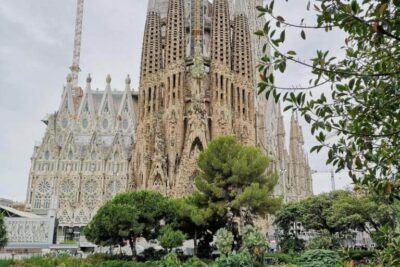
- Exploring the Unique Architectural Styles of Barcelona's Sagrada Familia and Cathedral
- The Historical Significance of the Sagrada Familia in Barcelona's Architectural Heritage
- A Comparative Analysis of the Barcelona Cathedral and Sagrada Familia
- Discovering the Cultural Impact of Antoni Gaudí's Sagrada Familia
- Unveiling the Secrets of Barcelona's Architectural Masterpieces
- The Influence of Gothic Architecture in Barcelona Cathedral and Sagrada Familia
Barcelona, a city where history and modernity intertwine, boasts an array of architectural masterpieces that capture the imagination. From the intricate facades of Antoni Gaudí's Sagrada Familia to the majestic gothic arches of the Barcelona Cathedral, each structure tells a unique story of artistic vision and cultural heritage.
In this journey, we delve into the stunning diversity of styles that define Barcelona's skyline. From the Sagrada Familia to Barcelona Cathedral: Exploring the Architectural Gems of Barcelona allows us to appreciate the city's rich architectural tapestry, showcasing influences that span centuries and inviting all to marvel at its beauty.
Exploring the Unique Architectural Styles of Barcelona's Sagrada Familia and Cathedral
The Sagrada Familia exemplifies a singular architectural style, blending Gothic and Art Nouveau influences with a distinctly modern twist. Designed by Antoni Gaudí, this basilica is renowned for its organic forms and intricate details, such as the vibrant stained glass windows that filter light into a kaleidoscope of colors. Gaudí's innovative use of geometry and nature-inspired motifs creates an atmosphere that transcends traditional religious architecture.
In contrast, the Barcelona Cathedral, also known as the Cathedral of the Holy Cross and Saint Eulalia, showcases the quintessential elements of Catalan Gothic architecture. Its soaring spires, ribbed vaults, and elaborate facades reflect a sense of grandeur and spiritual aspiration. The cathedral's cloister, home to a flock of geese, adds a serene touch, inviting visitors to explore its tranquil beauty amidst the bustling city.
Both architectural marvels serve as testaments to Barcelona's rich cultural heritage. While the Sagrada Familia is a celebration of modernism, the Barcelona Cathedral stands as a reminder of the city's medieval past. Here are some key differences between the two:
| Feature | Sagrada Familia | Barcelona Cathedral |
|---|---|---|
| Architectural Style | Modernisme | Catalan Gothic |
| Completion Date | Ongoing since 1882 | Completed in 1448 |
| Main Architect | Antoni Gaudí | Various (initially Berenguer de Montagut) |
| Significant Features | Organic shapes, vibrant colors | Spires, gargoyles, cloister |
Exploring these architectural gems not only enriches our understanding of Barcelona's history but also highlights the city's ongoing evolution. Each building invites admiration and contemplation, providing insight into the artistic movements that have shaped this vibrant metropolis.
The Historical Significance of the Sagrada Familia in Barcelona's Architectural Heritage
The Sagrada Familia is not only a masterpiece of architectural innovation but also a symbol of Barcelona's identity and aspirations. Its construction began in 1882, and it has become an enduring project representing the city's commitment to creativity and progress. Gaudí's visionary design reflects a deep connection to nature and spirituality, making it a significant pilgrimage site for both locals and tourists.
This basilica is steeped in historical significance, as it embodies the transition from traditional to modern architecture in the late 19th and early 20th centuries. The integration of religious symbolism with avant-garde techniques showcases a unique blend of cultural influences. Moreover, the Sagrada Familia has been recognized as a UNESCO World Heritage Site, further affirming its importance in the global architectural landscape.
Some key aspects of the Sagrada Familia's historical significance include:
- Innovative Techniques: Gaudí employed groundbreaking construction methods that challenged the architectural norms of his time.
- Symbol of Faith: The basilica serves as a testament to the Catholic faith, with intricate details representing biblical narratives.
- Continuous Evolution: Its ongoing construction reflects the spirit of collaboration and dedication across generations of architects and craftsmen.
In conclusion, the Sagrada Familia stands as a monument not only to Gaudí's genius but also to Barcelona's resilient spirit. Its towering spires and intricate details invite visitors to engage with the city’s rich artistic heritage, ensuring that this architectural gem remains a vital part of Barcelona's cultural narrative for years to come.
A Comparative Analysis of the Barcelona Cathedral and Sagrada Familia
The comparison between the Sagrada Familia and the Barcelona Cathedral reveals much about the evolution of architectural styles in Barcelona. While the Sagrada Familia embodies the freedom of modernisme, with its fluid forms and dynamic structure, the Barcelona Cathedral serves as a classic representation of Catalan Gothic architecture. The differences in their designs reflect the cultural shifts and artistic trends of their respective eras, making them significant in understanding Barcelona's architectural landscape.
Visitors to these landmarks often note the distinct atmospheres they evoke. The Sagrada Familia is characterized by:
- Innovative Design: Gaudí's incorporation of natural forms inspires awe and fascination.
- Colorful Interiors: The play of light through stained glass creates a spiritual ambiance.
- Ongoing Construction: The basilica remains a work in progress, symbolizing creativity and dedication.
In contrast, the Barcelona Cathedral offers a different experience, marked by:
- Historical Significance: Completed in the 15th century, it reflects a rich medieval past.
- Gothic Elements: The ribbed vaults and pointed arches emphasize verticality and grandeur.
- Tranquil Cloister: The serene environment invites contemplation and reflection.
This comparative analysis highlights not only the architectural brilliance of both structures but also their roles as cultural icons. Together, they tell the story of Barcelona's journey through time, encapsulating the city's rich history and artistic vibrancy.
Discovering the Cultural Impact of Antoni Gaudí's Sagrada Familia
The Sagrada Familia stands not only as a masterpiece of architectural ingenuity but also as a profound cultural symbol for Barcelona. Its design encapsulates a blend of religious devotion and artistic expression, making it a focal point for spiritual and tourist activities alike. As visitors explore its intricate facades and soaring towers, they experience a sense of wonder that transcends mere aesthetics, inviting contemplation of the deeper meanings embodied within its walls.
The basilica's impact extends beyond its physical presence; it has served as a catalyst for modern architecture, inspiring countless architects worldwide. Gaudí's innovative approach, namely his use of natural forms and complex geometry, challenges traditional building methods and encourages a more organic integration with nature. This *philosophy of design* has influenced many contemporary structures, marking the Sagrada Familia as a pivotal point in architectural history.
Moreover, the ongoing construction of the Sagrada Familia symbolizes the city's commitment to its cultural identity. Each year, millions of visitors come to witness its evolving form, contributing to a dynamic narrative that reflects the spirit of collaboration among architects, artisans, and the community. Some key aspects of its cultural impact include:
- Community Engagement: Local participation in funding and supporting the project fosters a sense of ownership and pride.
- International Recognition: The basilica has become a symbol of Barcelona on the global stage, attracting diverse audiences.
- Artistic Collaboration: Gaudí's vision has inspired numerous artists and craftsmen, ensuring a rich legacy.
In essence, the Sagrada Familia is more than just a building; it is a living testament to Barcelona's vibrant cultural tapestry. Its intricate details, innovative design, and ongoing legacy continue to captivate and inspire, ensuring that it remains a cherished part of the city's architectural heritage for generations to come.
Unveiling the Secrets of Barcelona's Architectural Masterpieces
Unveiling the secrets of Barcelona's architectural masterpieces reveals a fascinating narrative of creativity, passion, and cultural evolution. The interplay between the Sagrada Familia and the Barcelona Cathedral showcases how diverse architectural styles can coexist while each telling its own story. From the intricate symbolism embedded in Gaudí's modernist designs to the historical depth found in the Gothic structures, every corner of these buildings invites visitors to ponder the rich tapestry of the city’s history.
As we explore further, we uncover the influence of local craftsmanship that has contributed to the allure of these landmarks. The dedication of artisans, both past and present, has left an indelible mark on each structure, from the majestic stone carvings of the cathedral to the meticulously crafted mosaics of the Sagrada Familia. This commitment to artistry not only enhances the architectural beauty but also fosters a sense of community pride that resonates throughout Barcelona.
Furthermore, the significance of these masterpieces extends beyond their aesthetic appeal; they serve as important cultural icons that reflect the spirit of the city. The Sagrada Familia, with its ongoing construction, symbolizes the relentless pursuit of innovation, while the Barcelona Cathedral stands as a monument to the city’s medieval roots. Together, they embody a harmonious balance of the old and the new, inviting visitors to appreciate the layers of history that have shaped modern Barcelona.
Ultimately, the exploration of Barcelona's architectural gems, particularly through the lens of the Sagrada Familia and the Barcelona Cathedral, offers a unique opportunity to experience the city's soul. Whether it is the dynamic curves of Gaudí’s masterpiece or the serene grandeur of the Gothic cathedral, each structure serves as a testament to Barcelona's enduring legacy and its vibrant cultural landscape.
The Influence of Gothic Architecture in Barcelona Cathedral and Sagrada Familia
The influence of Gothic architecture is profoundly evident in both the Barcelona Cathedral and the Sagrada Familia, showcasing an intersection of styles that highlights the city's architectural evolution. The cathedral, with its majestic spires and intricate ribbed vaults, stands as a paragon of Catalan Gothic design. Its verticality and ornate details reflect a deep-rooted aspiration towards the divine, characteristic of Gothic structures, while simultaneously illustrating the cultural and historical context of medieval Barcelona.
In contrast, Antoni Gaudí's Sagrada Familia, although primarily a work of modernisme, incorporates elements of Gothic architecture, particularly in its vertical lines and intricate facades. Gaudí drew inspiration from the majestic cathedrals of Europe, merging the classic Gothic features with his unique interpretation. This blend results in a structure that, while innovative, pays homage to the architectural traditions that preceded it. Key influences include:
- Vertical Emphasis: Both structures feature soaring heights that draw the eye upward, creating a sense of elevation.
- Intricate Ornamentation: Elaborate details in stone carving are prevalent in the cathedral and echoed in the Sagrada Familia's façade.
- Symbolic Design: Each element within these buildings serves a narrative purpose, reflecting religious themes and historical significance.
Additionally, the way light interacts with these spaces exemplifies their Gothic roots. The Barcelona Cathedral's stained glass windows tell biblical stories through colorful illumination, while the Sagrada Familia’s innovative use of light transforms its interior into a vibrant spectacle, reminiscent of Gothic cathedrals. This artistic dialogue between the two styles underscores the continuous influence of Gothic principles in shaping modern architectural practices.
Ultimately, the architectural legacies of the Barcelona Cathedral and the Sagrada Familia not only highlight the beauty of Gothic influences but also illustrate the evolution of Barcelona's architectural identity. Together, they represent a timeline of artistic expression and cultural significance, inviting ongoing exploration and admiration from generations to come.
If you want to know other articles similar to From the Sagrada Familia to Barcelona Cathedral: Exploring the Architectural Gems of Barcelona you can visit the category Sagrada Familia.
Deja una respuesta

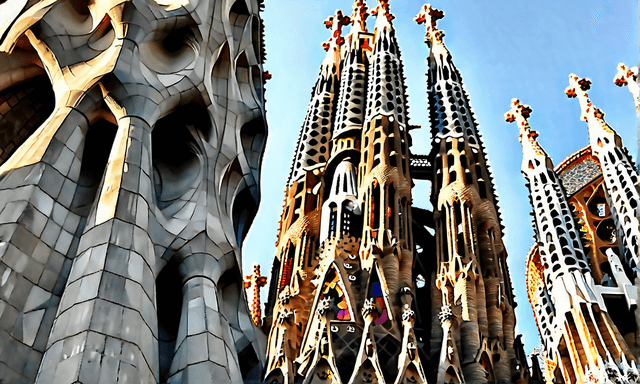
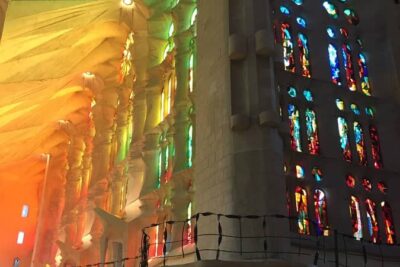



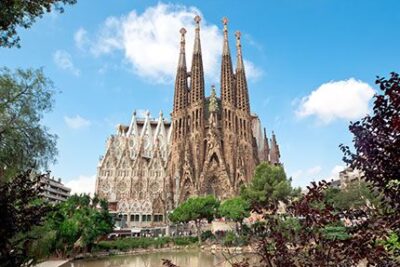
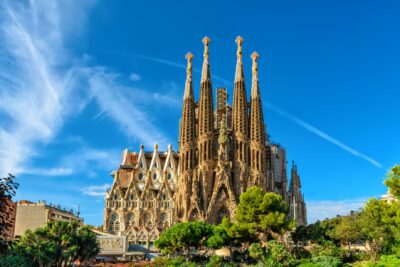
Read more!